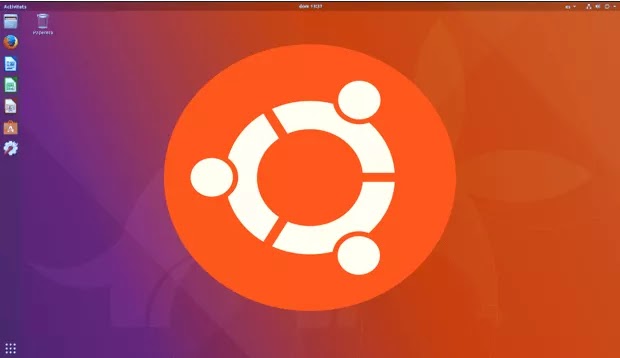Public Wi-Fi is very convenient to most of the people and it is available in almost all restaurants, bookstores, airports, hotels, random retail outlets and even places of work. While this is the ideal case, cases of hackers using public Wi-Fi to get peoples information have also been rampant.
For professionally, however, the use of the public Wi-Fi has had an enormous boom, especially when working remotely or when they are travelling. The convenience and freedom of using public Wi-Fi comes at a price hence it is very important for users to truly understand the dangers that are associated with the connections.
It is very critical to learn ways to protect your data and always remain safe when using public Wi-Fi.
Although the Wi-Fi providers have a responsibility to protect the information on the networks, the ultimate responsibility is squarely on the users. Contrary to popular belief, the users should educate themselves on the dangers of public Wi-Fi and know how to protect themselves from hackers online.
Risks of Public Wi-Fi
1. Ad Hocs
When you are using public Wi-Fi, your device is highly likely to discover new networks in the proximity. Ad hocs are basically peer-to-peer to other networks and they connect two devices directly. Hackers through this are able to connect to either your mobile or laptop directly if they are in the proximity as the channels are open for new connections. This is a serious danger especially the fact that one side of the network alone can allow ad hoc connection without the consent of the second party.
2. Man in the middle
This is the most common type of threat when connected to public Wi-Fi. Man in the middle attacks is where a third party, usually a hacker intercepts the data packages as it travels between one device to another or between point A to point B. The most common tactic used in Man in the Middle attack is eavesdropping.
Most of the times when it happens, the two parties or users are not aware as they believe they are talking to each other directly. The reason this is rampant on public Wi-Fi is due to the fact that these connections do not have the mutual authentication protocols designed to ward off the Man in the Middle attack.
3. Rogue Wi-fi Networks
Rogue Wi-Fi networks are a threat and a danger because if one is not careful they will easily fall into this trap. Most hackers create and mimic a Wi-Fi network that looks very legitimate and appears to be a trusted network. The users who are not careful simply login into the Wi-Fi network and get their data stolen. Usually, this rogue Wi-Fi networks do not ask for any password hence this is one of the ways to tell that they are fake. Every legit public Wi-Fi network will always have some login details.
4. Worms
Worms are very common but they are different from traditional computer viruses as they do not need any program to attack so as to be effective. When you connect to a public Wi-Fi, it is very easy for the worms to propagate themselves if you do not have any proper security measures in place. A worm can very easily move from one device to another if its connected to the same network thus causing harm.
5. Endpoint Attacks
Since network edge security and over the air encryption has improved tremendously over the years, hackers have now started to focus on Wi-Fi endpoints. The endpoints of a connection are very vulnerable to the attacks. Hackers can set up fake websites and landing pages and give them access to the whole network. This gives it an entry point on any device within the network and will ultimately spread to your device.
Tips to stay safe when using public wifi
1. Consider using a VPN
Since all sites do not have SSL encryption, you should try using a VPN. A VPN will allow you to route your online activities through a different secure and private network and hence give you private networks security even when using public Wi-Fi. There are so many choices of VPNs to use but CyberGhost stands out.
CyberGhost
For professionally, however, the use of the public Wi-Fi has had an enormous boom, especially when working remotely or when they are travelling. The convenience and freedom of using public Wi-Fi comes at a price hence it is very important for users to truly understand the dangers that are associated with the connections.
It is very critical to learn ways to protect your data and always remain safe when using public Wi-Fi.
Although the Wi-Fi providers have a responsibility to protect the information on the networks, the ultimate responsibility is squarely on the users. Contrary to popular belief, the users should educate themselves on the dangers of public Wi-Fi and know how to protect themselves from hackers online.
Risks of Public Wi-Fi
1. Ad Hocs
When you are using public Wi-Fi, your device is highly likely to discover new networks in the proximity. Ad hocs are basically peer-to-peer to other networks and they connect two devices directly. Hackers through this are able to connect to either your mobile or laptop directly if they are in the proximity as the channels are open for new connections. This is a serious danger especially the fact that one side of the network alone can allow ad hoc connection without the consent of the second party.
2. Man in the middle
This is the most common type of threat when connected to public Wi-Fi. Man in the middle attacks is where a third party, usually a hacker intercepts the data packages as it travels between one device to another or between point A to point B. The most common tactic used in Man in the Middle attack is eavesdropping.
Most of the times when it happens, the two parties or users are not aware as they believe they are talking to each other directly. The reason this is rampant on public Wi-Fi is due to the fact that these connections do not have the mutual authentication protocols designed to ward off the Man in the Middle attack.
3. Rogue Wi-fi Networks
Rogue Wi-Fi networks are a threat and a danger because if one is not careful they will easily fall into this trap. Most hackers create and mimic a Wi-Fi network that looks very legitimate and appears to be a trusted network. The users who are not careful simply login into the Wi-Fi network and get their data stolen. Usually, this rogue Wi-Fi networks do not ask for any password hence this is one of the ways to tell that they are fake. Every legit public Wi-Fi network will always have some login details.
4. Worms
Worms are very common but they are different from traditional computer viruses as they do not need any program to attack so as to be effective. When you connect to a public Wi-Fi, it is very easy for the worms to propagate themselves if you do not have any proper security measures in place. A worm can very easily move from one device to another if its connected to the same network thus causing harm.
5. Endpoint Attacks
Since network edge security and over the air encryption has improved tremendously over the years, hackers have now started to focus on Wi-Fi endpoints. The endpoints of a connection are very vulnerable to the attacks. Hackers can set up fake websites and landing pages and give them access to the whole network. This gives it an entry point on any device within the network and will ultimately spread to your device.
Tips to stay safe when using public wifi
1. Consider using a VPN
Since all sites do not have SSL encryption, you should try using a VPN. A VPN will allow you to route your online activities through a different secure and private network and hence give you private networks security even when using public Wi-Fi. There are so many choices of VPNs to use but CyberGhost stands out.
CyberGhost















0 Comments